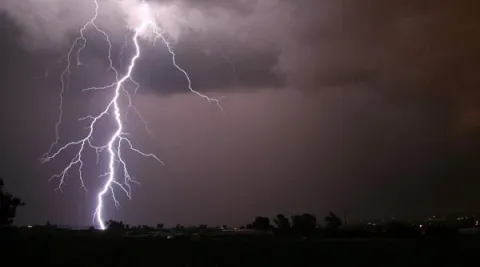Sound and Light
How are sound and light waves produced, transmitted, and detected? Start by examining the physics of thunder and lightning, then explore the applications of waves in doing cutting-edge science.
Curriculum module media

A famous inventor Nikola Tesla said, If you want to find the secrets of the universe, think in terms of energy, frequency, and vibration.
In this unit, students investigate the characteristics and properties of waves - sound, light, and seismic - in order to figure out how they are produced, how they transfer energy as they move through matter, and how they act when they reach a boundary between types of matter.
Students also measure and compare the speed of sound and light waves in order to understand the thunderstorm phenomenon, and explore applications of waves at Sanford Underground Research Facility.